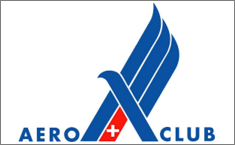An overview of the background of the FLYTOP courses:
FLYTOP means: Flight Safety Training for Organisations and Pilots
- FLYTOP is a training programme for accident prevention in air sports.
- FLYTOP is based on findings about Human Competence.
- Human Competence is a branch of the Human Factors in aviation.
- Human Factors in Aviation recognizes human beings as key cause for and as key defense against accidents in aviation.
The FLYTOP course system uses findings from the Human Competence domain to prevent accidents in air sports.
Courses
FLYTOP courses last between 2 hours (FLYTOP-Basic) and 2.5 days (FLYTOP-Club and FLYTOP-Instructor).
Cost
FLYTOP courses are non-commercial.
In Switzerland and some states in Germany, costs are sponsored by the aviation parent organizations. Furthermore, different insurances have agreed to sponsoring.
Further information about the cost of different courses on request.
Trainer
Former flight safety inspectors, speficically trained, experienced flight instructors and human competence experts act as FLYTOP trainers.
The FLYTOP development team consists of:
Chief Developers
Regina Ultsch, Marburg, accredited social pedagouge, psychosocial counselling, family counselling
Email: rultsch(at)ulweb.de
Prof. Dr. Alfred Ultsch, Marburg, flight instructor, trainer, human competence expert
Email: ultsch(at)ulweb.de
Ausbildungs-Trainer und Mitentwickler
Barbara Hofer, Switzerland
Email: barbara.d.hofer(at)gmx.net
Herbert Lehner, former flight safety inspector, flight instructor
Email: herbert.a.lehner(at)t-online.de
- Details
- Category: Module EN
Composition of the FLYTOP training programme
Afterwards, thematic FLYTOP workshops can be attended.
Your flight safety inspector (FSI) will be happy to provide further information about the courses.
The FLYTOP-Accident course is intended for clubs and flight schools, which suffered an accident and would take this opportunity to increase flight safety in the future. This course can replace FLYTOP-Club.
One of FLYTOP's fundamental principles is training ont only the pilot, but strengthening the safety net sorrounding him. Therefore, FLYTOP first addresses the club (or flight school) and the pilots' relatives before offering pilot-specific training classes.
After completing the basic FLYTOP courses, further topics, like "flight-relevant decisions with time constraints", "cross-country flights", "human competence for flight instructors", etc. may be attended.
- Details
- Category: Module EN
The FLYTOP seminars are flight safety seminars with a special focus on error culture and communication. They are performed by an experienced team of psychologists and flight instructors and involve all of the club, including the pilots' spouses. Specific courses for flight instructor training and ‹cadre training› for the club's management team complement FLYTOP-Club.
A feedback about FLYTOP-Club from Paterzell, which pleased us: «We should have employed this method long ago. Thank you!»
FLYTOP courses are sponsored by the BAZL in Switzerland and by the parental organization in parts of Germany; therefore, in most cases the club only has to care for suitable premises and catering. A very important condition, however, which is also strictly supervised, is extensive participation of the club members. We require 80% of the club members and all of the club's management team to participate in the seminar, to gain the required effect. For detailed information about the requirements for a FLYTOP course, see here.
This is emphasised by another voice from Paterzell, where we successfully completed a FLYTOP-Club course: «I think it's shameful, that not everybody is here. Some of them with flimsy excuses.»
- Details
- Category: Module EN
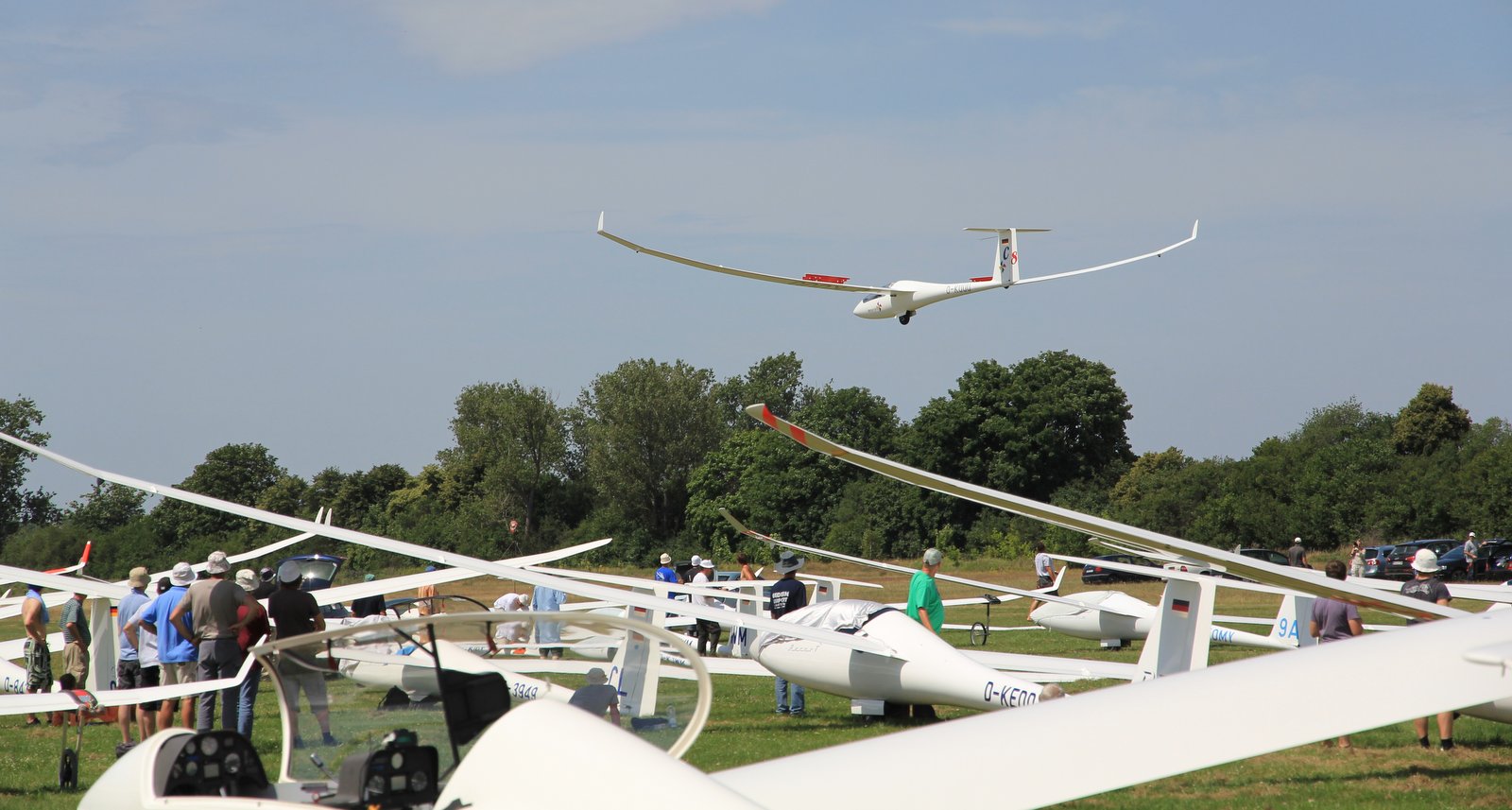 Flying competitions is risky business!
Flying competitions is risky business!
While during gliding in a club, the accident rate averages on 14 fatal accidents per 1M flights, competitions record 144 fatal accidents per 1M flights, ten times the number of non-competition gliding!
What does this mean in real life? Imagine a competition with 50 participants, two training days, and ten scoring days. In this competition, the probability to be witness (or even victim) of a fatal accident is 8%!
Do you want to bear this risk, being competition pilot or competition lead?
Why are accident rates this high? Competition pilots are no rookies!
But this is one of the key problems: A wise man once said: Rookies make rookie mistakes. Expert make expert mistakes.
Competitions exert a very high stress level due to the competitive pressure—way higher than during normal flights on the weekends. Additionally, there is the knowledge about the own abilities and the imagined obligation to fly. Even if not fit 100%, no one will skip a scoring day. This tunnel view for success, also called target fixation, cannot be overcome with our legacy methods for accident prevention.
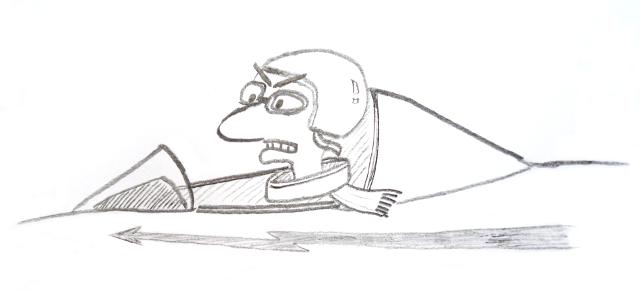 Target Fixation: Focussed on success (only!)
Target Fixation: Focussed on success (only!)
- Details
- Category: Module EN
Flight instructors as multipliers and training them in mordern accident prevention methods is an important matter to us. We do this during continued and, of course, intial flight instructor training.
- Details
- Category: Module EN
The FLYTOP 'cadre school' is specifically designed for the management team of the club: the board, functionaries, and flight instructors.
It complements FLYTOP-Club, but may be completed before the club course.
- Details
- Category: Module EN
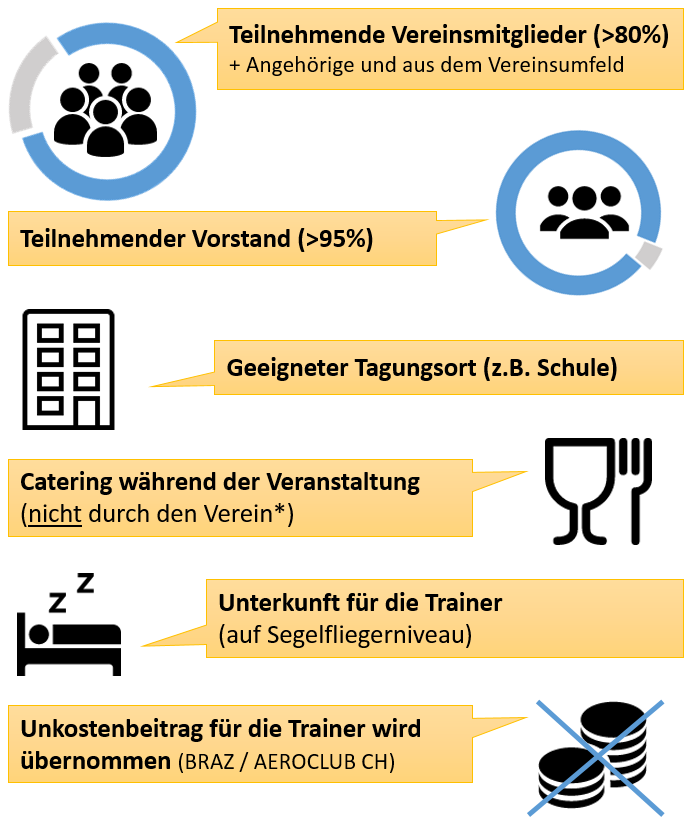 As the FLYTOP Club Course deeply interferes with communication and structures within the club, in order to achieve its goal, it is necessary to fulfil certain requirements.
As the FLYTOP Club Course deeply interferes with communication and structures within the club, in order to achieve its goal, it is necessary to fulfil certain requirements.
Firstly, the complete management team as well as a majority of the active club members (> 80%) must take part; participation of as many closely related individuals (spouses, parents, non-flying club members, etc.) as possible is desirable. This applies to the complete course, i.e. both days!
Furthermore, suitable conference facilities (~ 10 rooms for group work) are required, like a conference hotel or a school. In order to be focused on the course, the catering must not be provided by members or dependants of the club, but externally. Additionally, the trainers require an accomodation (according to gilder pilots' standards).
This all might not be an easy task for a club. But all participants and the club will profit from the course—not only in terms fo flying.
Good news for clubs from Switzerland: The Bundesamt für Zivilluftfahrt and the Schweizer Aeroclub pay the cost of the trainiers; therefore, the financial effort for an individual club is very limited.
- Details
- Category: Module EN
FLYTOP Competition class is a two-tier class:
The first tier, taking place before the competition officially starts—in the best case between two and four weeks prior to the opening of the competition—trains the competition staff. This includes, of course, the competition lead, but also supporting staff, including:
- Jugdes
- Tow pilots
- Grid staff, etc.
The second tier takes place on the first scoring day or, if applicable, on the mandatory training day. However, the endeavour for safety is not done with a single briefing. This part, where all staff and all participants take part, is a kick-off for the continued effort of everybody to achieve maximum safety during the competition.
In contrast to the known flight safety briefings during competitions, behaviour with (positive) security relevance attains greater weight:
Safety will pay off in socring points!
- Details
- Category: Module EN
The dictum «Driving to the airport is the most dangerous part of gliding.» is not only misleading, because driving by car or riding a bike cannot be compared with flying, it's plainly wrong.
When flying, we find ourselves in an environment human is not adapted to—namely air—flying with a speed requiring smooth deceleration in order to survive. The bar is raised further by physological strains, like thin air and intense temparature variations, and psychological burdens, ranging from time pressure to the well known peer group pressure.
In general (club) gliding, these latent risks manifest themselves in approximately 14 fatal accidents per 1M flights, in alpine gliding even more thant 30 fatal accidents per 1M flights.
The following chart shows the trend of the accident rates in Germany over 13 years, Switzerland showing similar numbers for non-alpine gliding in the same timeframe. (Source: BFU)

For comparison only: The accepted definition for 'safe sports' tolerates a risk of 1 fatal accident per 1M flights.
In order to prevent these potential hazards from becoming accidents, rules and more advanced approaches, which deal with human beings being prone to errors.
- Details
- Category: Module EN
During years of experience, almost a century in gliding since the first hops of brave pioneers, proven procedures have evolved, which counteract the most important hazards in gliding. Those are not only passed on from flight instructors to pilot trainees, but also laid down as regulation or club rule. Violating such rules will be punished.
We call this kind of flight safety static flight safety or rective flight safety. ‹Reactive›, because rules and regulations often arose from accidents.
Is this static method effective?—Yes!
Thanks to the evolution of procedures and regulations, the accident rates, e.g. for gliding in Switzerland, were lowered from more than 200 fatal accident per 1M flights in 1980 to only 34 in 2000.
Today, the biggest issues have been addressed, regulations are fine-tuned, weather is rarely a factor, and so are technical problems. Almost all accidents nowadays can be tracked to the human factor. Contributing are circumstances in the ‹system› gliding, which are rarely investigated after accidents: traiing, organisation, club composition and club management.
Therefore, the accident rate has stagnated for 15 to 20 years on an inacceptably high level.
A Broader View
Also others had the problem of stagnating accident rates: Commercial aviation in the 1980s saw accident rates stabilizing instead of decreasing like before. The safety niveau of 1 accident in 1M flights would mean an airline crash every two weeks, considering todays frequency of flights.
The airlines realised, that something had to be done, considering the rising amount of air traffic. Technology had reached a mature relibility, so the focus was on the human factor now, empoying dynamic flight safety.
We can also employ this approach of dynamic flight safety in gliding and enhance our safety posture—specifically: preventing accidents and hence the loss of club mates.
- Details
- Category: Module EN
Today's accidents can happen to anybody at any time. Why?
- Accidents result from errors
- Rookies make rookie erros
- Experts make expert errors
- Nobody can predict, when an error will happen
The Problem
Finding the error means (too often) finding a culprit. Errors without serious results are therefore often neglected and their potential for improvement is wasted.
The Reason Model (Swiss Cheese Model)
Assuming each layer of flight safety—technology, weather (forecast), club mates, and last but noch least the pilot—as safety nets, each error is a hole in the respective safety net.
If holes in all safety nets align, an accident happens. But we can see the holes only, as soon as an accident happens, i.e. when it's too late.
The Solution
Proactive treatment of errors and considering them as chance for improvement points out the holes in the safety nets, before an accident happens. Proactive flight safety means learning from errors instead of learning from accidents.
To learn from errors, they must be addressed openly. But how does this fit to a club and safety culture, which punishes errors made?
From PuMist to LefEr
Assuming to eliminate any error using enough force, errors need to be punished. We call this system PuMist—Punish Mistakes.
Assuming errors to be human, we need to establish a culture, that allows talking about errors and allowing to Learn from Errors—LefEr. This will point out the holes in the cheese slices of our flight safety and enables us to mitigate them effectively.
Communication as Key to Flight Safety
Communication about errors, own or others', is always critical, as communication is multi-dimensional in any case.
A very popular model is the communication model of Schulz von Thun, which differentiates four layers:
- Facts
- Appeal
- Relationship
- Self-revelation
Depending on the «layer», the receiver ist listening on, the same message may be interpreted differently. In order not to have relevant information being understood as attack, communication training is necessary. This training is provided by the FLYTOP courses.
- Details
- Category: Module EN
Flight operations in gliding clubs is the backbone of our aeronatical culture in general aviation. However, specific risks exist, which we need to address to fly safely.
We do not want to lecture virtually, but provide a proactive approach to flight saftey in club operations—more about this later. So at first some active part for you, a question to answer:
How do you rate flight safety in your club's flight operation?
- Driving to the airport is the most dangerous part of gliding.
- We stick to all known rules and procedures. Violators will be reprimanded and punished. This eliminates hazards.
- We know that errors are human. But we wonder if there is a way to fly safely anyhow.
Or are you a spouse of an active club pilot and are concerned about his or her safety?
- Details
- Category: Module EN
During years of experience, almost a century in gliding since the first hops of brave pioneers, proven procedures have evolved, which counteract the most important hazards in gliding. Those are not only passed on from flight instructors to pilot trainees, but also laid down as regulation or club rule. Violating such rules will be punished.
We call this kind of flight safety static flight safety or rective flight safety. ‹Reactive›, because rules and regulations often arose from accidents.
Today, the biggest issues have been addressed, regulations are fine-tuned, weather is rarely a factor, and so are technical problems. Almost all accidents nowadays can be tracked to the human factor. Contributing are circumstances in the ‹system› gliding, which are rarely investigated after accidents.
The FLYTOP Competition course is designed to mitigate this weakness and address the peculiarities of the ‹system› gliding in a competition situation.
- Details
- Category: Module EN
Is there anything to do for a spouse, except hoping or praying that nothing happens and he/she returns safely from the airfield, the flying expedition, or the competition?—Yes, there is!
Flight Safety as Entire System
As «externals», spouses of pilots constitue an important element for flight safety for two reasons:
Like everywhere, also airfields are prone to «operational blindness». Doing something like it's always done does not imply doing it safely. But you do not only have to recognize this condition, you also have to convince the long-established senior pilots with your arguments.
Most pilots are technically interested people, which doesn't necessarily implies superior communication skills. This demands the pilots' spouses, in particular if they have different fields of interest, and their communication skills.
Combining these two factors promises a significant increase in saftey, but to have the spouses understand the peculiarities of flight operations and to have the pilots regard the ‹pedestrians'› advice, an introduction into the relation of communication and safety is necessary. This introduction is provided by the FLYTOP-Club course.
- Details
- Category: Module EN
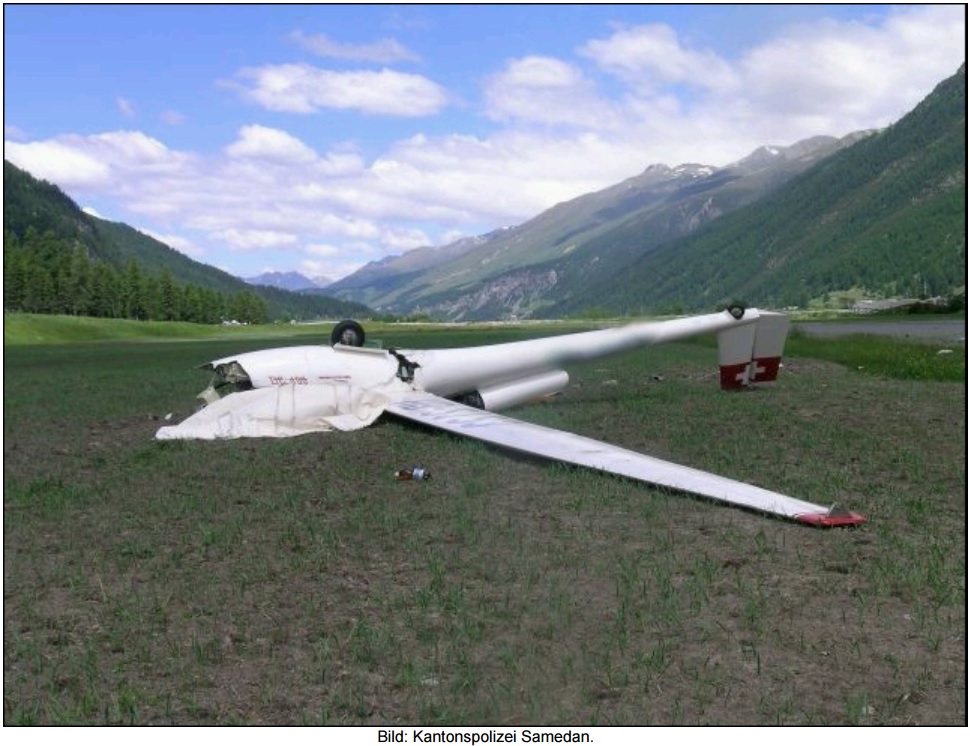 Sad but true: A rising demand for flight safety training is often only recognized after a severe accident. Only losing friends and property gives importance to the annoying flight safety subject. The depressing question: Could we have avoided it?
Sad but true: A rising demand for flight safety training is often only recognized after a severe accident. Only losing friends and property gives importance to the annoying flight safety subject. The depressing question: Could we have avoided it?
Technical malfunctions has nearly ceased causing accidents—it is the human being making mistakes. But in general, there is a chain of small, individually insignificant errors, which leads to the catastrophy. Typically, many people are involved, and the right communication strategy and a sound personal attitude towards errors can catch or mitigate a lot of mistakes. Our goal is to catch these small mistakes in time and spread out a safety net.
FLYTOP courses teach the club scientifically proven mehtods for accident prevention, treating the whole club as one unit. After any accident, specific content is added to easen the burden for the club and each individual. Our trainers are specifically instructed to deal with people in such circumstances.
- Details
- Category: Module EN





